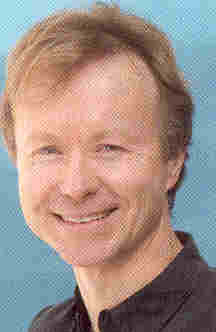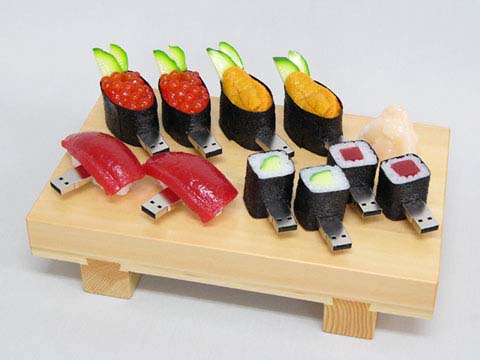
My interest in the potential role of fasting was
piqued several years ago when I heard two closely spaced lectures. In
the first, a well-known health and nutritional guru indicated he had
sustained a SCI as a young man. Due to ensuing depression, he attempted
to starve himself to death. However, after losing much weight, he
started to regain sensation and eventually fully recovered. Today, in
his mid-fifties, he is a weightlifter, equestrian, and for fun, jousts
like the knights in days of yore.
A few days later, I heard another talk indicating
how fasting stimulates growth-hormone production, and people in cultures
that incorporated periodic fasting into their lifestyle lived longer.
Indeed, much evidence suggests that restricting
overall food intake enhances health, including less aging, increased
life span, a reduction in cancer and disease, and improved neuronal
health. Intriguingly, benefits may accrue even if overall caloric
consumption is not curtailed but food is provided only every other day (EOD).
For example, National Institutes of Health scientists found that EOD-fasting
in mice “has beneficial effects on…neuronal resistance to injury…that
are independent of caloric intake.” (Anson et al. PNAS 2003;
100(2))
Fasting & SCI
Recent studies suggest that such fasting may also
promote recovery after acute SCI. Specifically, Drs. Ward Plunet and
Wolfram Tetzlaff (photo), University of British Columbia randomized rats
with experimental cervical injuries into control animals with free
access to food, and those with access only every other day starting
immediately after injury.
 Compared
to controls, fasted rats had improved functional recovery, smaller
injury-site lesions, and increased neuronal regeneration.
Compared
to controls, fasted rats had improved functional recovery, smaller
injury-site lesions, and increased neuronal regeneration.
The investigators concluded that EOD-fasting “can
have benefits when initiated after the insult” … “Most importantly,
intermittent fasting is a safe and simple multifaceted treatment that
could be clinically implemented to improve functional recovery in
patients.”
Tetzlaff noted: “We believe that a rigorous
re-evaluation of nutritional guidelines for acutely injured patients is
in order,” and are planning more basic-science experiments (toward a
mechanistic understanding as well as a further corroboration of the
principle in different SCI-lesion models). Hopefully this will provide
the basis for clinical trials.”
Mechanistically, the investigators think that
fasting affects the body’s immune response, resulting in fewer,
regeneration-blocking immune cells reaching the injury site.
Raw Diet
Consistent with this mechanism, some suggest that
an easier means of achieving the benefits of fasting is by eliminating
cooked foods. They claim that consuming a diet composed predominately
of cooked foods - as most of us do - provokes an increase of lymphocytes
(an immune-system, white-blood cell), which on an ongoing basis stresses
the body. Fasting provides a break from such dietary stress.
Although the physiological stress of cooked foods
seems odd given that we have eaten them over the millennia, in fact,
their consumption represents a small sliver in mankind’s evolutionary
past and is unique among the animal kingdom. Most likely, our physiology
has not sufficiently evolved from the eons of time our hominid ancestry
ate raw foods to the comparatively brief epoch of mankind’s ascent into
the modern age and transition to cooked foods.
Throughout history, many cultures have appreciated
the health benefits provided by uncooked, unprocessed foods, including
their nutrients and inherent life-force energy. For example, the
Essenes, an ancient, ascetic Judaic sect whose eschatological wisdom
generated the Dead Sea Scrolls and may have influenced Jesus’
teachings, eschewed cooked foods unless heated by the sun. Given that
they possessed esoteric knowledge that has transcended the ages, perhaps
they also had valid dietary insights that go beyond contemporary
nutritional paradigms.
In another example, calling it “medicine that
walks,” Native Americans have historically incorporated raw meat into
their diet.
Given this theory, it has been suggested that in
lieu of fasting - which should be carefully undertaken - a diet of
primarily uncooked foods will build up the body’s post-injury
regenerative potential. Open-minded scientists could easily test this
possibility by experiments similar to those described above.
An early study evaluating cooked foods’
physiological effects is entitled The Influence of Food Cooking on
the Blood Formula of Man authored by Swiss scientist Dr. Paul
Kouchakoff (Proceedings: First International Congress of Microbiology,
Paris 1930). In a process called digestive leukocytosis, Kouchakoff
notes that after eating, “white corpuscles” increased in the blood, an
effect not observed when the diet avoided cooked and “manufactured”
foods:
“We find that, after taking raw foodstuffs, neither
the number of white corpuscles nor the correlation of their percentage
has change. Ordinary unboiled drinking water, mineral water, salt,
different green foodstuffs, cereals, nuts, honey, raw eggs, raw meat,
raw fish, fresh milk, sour milk, butter – in other words, food stuffs in
the state in which they exist in nature, belong to the group of those
which do not call forth infringement in our blood formula.”
In a nutshell, when cooked foods are avoided, the
lymphocyte count may move to the fasting levels.
Kouchakoff determined that each food has a critical
temperature. When heated above this temperature, lymphocyte count will
double. Again, if the same food is eaten in sufficient quantity at
temperature never above its critical temperature (~155-185o
F) then the lymphocyte count will return to normal. Foods eaten in
mixtures of greater than about 50% containing foods heated past their
critical temperature would trigger the lymphocyte-doubling effect.
Some claim this effect relates to the water within
the food. The angle between H2O’s hydrogen and oxygen
molecules is supposedly that which the body is actually sensing. Hence,
you can have 100% foods not heated past critical temperature and water
that has been boiled (e.g., coffee, tea), even if it has been cooled
again, and this molecular bond is sensed, resulting in lymphocyte
increase.
Although we tend to think of water as a simple
molecule, it has much greater physiology-influencing structural and
electromagnetic dynamics than most of us appreciate. It is through
water’s complexity that many healing energies are mediated.
Conclusion
These paradigm-expanding, yet simple, dietary
approaches are supported by intriguing evidence. Fasting may promote
healing and regeneration by altering our immune system and shifting
lymphocyte count. This shift may also be triggered by consuming a raw
diet, which is easier than fasting.
In many life situations, the KISS principle
(keep it simple, stupid) has great wisdom. In our efforts to develop
high-tech, complicated SCI solutions through expensive clinical trials,
perhaps we have overlooked a KISS dietary approach.
(Kouchakoff’s research is posted at
http://www.seleneriverpress.com/media/pdf_docs/37_INFLUENCEOFCOOKING.pdf
)